Several years ago I found this fabric on the website of Britex Fabrics in San Francisco. As I have always been intrigued with “alphabet” prints, and I love red, making this purchase was an easy decision.
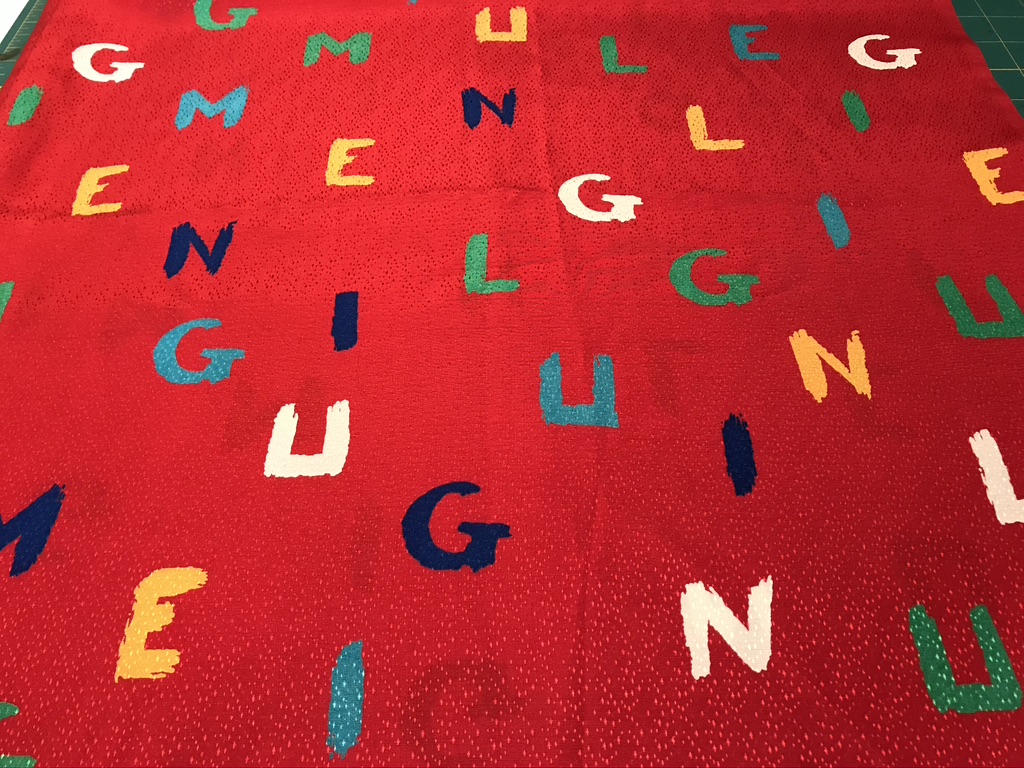
At first glance, it appears to be just that – an alphabet print. But if you look closely, you start to realize that the letters represented are not all the alphabet. In fact, only 7 letters of the alphabet are represented. They are indeed only the letters in the surname of the manufacturer, Marcel Guillemin et Cie. The manufacturer’s name is in the selvedge.

I decided to buy two yards, thinking I would one day make a blouse. A couple of years went by and I had occasion to visit Britex while on one of my trips to California. By this time I had started making Classic French Jackets, and I was always on the lookout for potential lining fabrics for a future jacket. To my great surprise, the bolt of this exact fabric was on the silk table, which gave me the opportunity to purchase another yard “just in case.” (I’m not sure why I didn’t buy another two yards.) This one-yard length joined its sibling in my fabric closet. I thought about it a lot, and often got it out to admire it, still not committing to its actual use, however.
Fast forward several years – to 2020, to be exact. A plan started to form in my mind for this fabric. And it all had to do with this blouse pattern from 1957. I envisioned this blouse made into a dress, and that was that. Decision made!
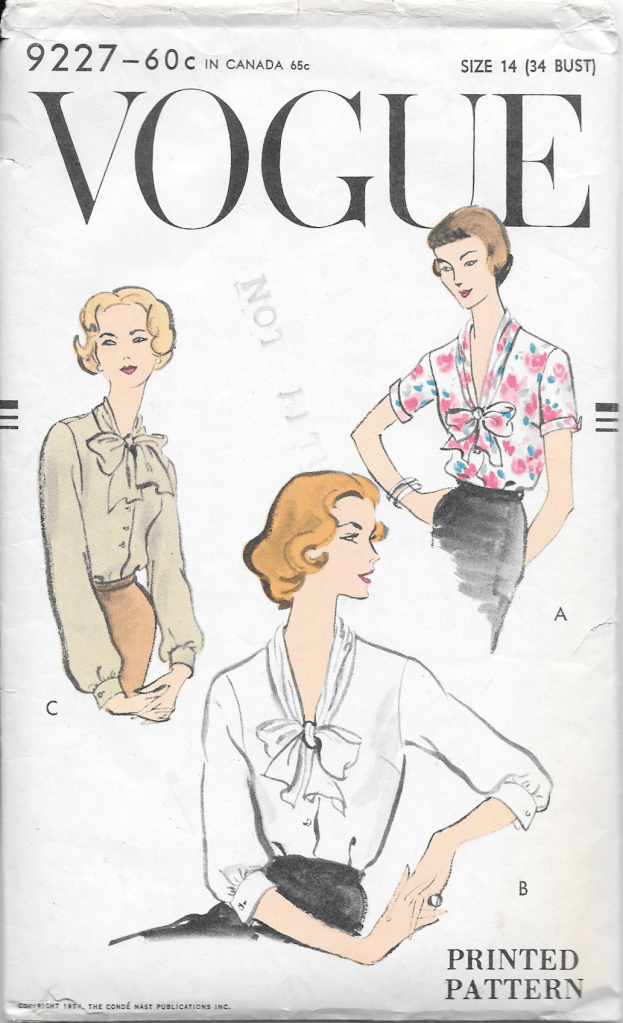
Sitting in my sewing queue over the summer, this fabric kept talking to me. Although at one time, most fabric manufacturers proudly included their name on the selvedge (and even sometimes provided labels), it is somewhat rare to find this selvedge notation now. So, I wanted to know “Who is Marcel Guillemin?”
I was able to find a little bit of information online, but only enough to raise more questions. The most valuable information came from my personal “library” of fashion/fashion history books, which not only provide me with inspiration but also background information. Although I still have many blanks to fill in, this is what I discovered – and what a surprise it has been!
- Marcel Guillemin et Cie was a “wholesaler established in Paris in 1930; manufactured silk and synthetic fabrics; still active today.” I found this entry in Balenciaga: Shaping Fashion, by Lesley Ellis Miller, V&A Publishing, London, 2007.
- The company provided “ribbons, silk and velvet” for Balenciaga (ibid) and silks for Christian Dior. Each couturier had a list of textile purveyors whom they used for their creations, and it was exciting for me to find Marcel Guillemin among the listed. Anyone who knows of the post-World War II efforts to revitalize the devastated fashion industry can appreciate what Guillemin and other textile concerns faced at that time. “The French luxury textile industry was a fragile one throughout the postwar period. To assist manufacturers, the French government gave a subsidy to couture houses if they used 90 percent French textiles in a collection.” Christian Dior: History and Modernity 1947-1957, by Alexandra Palmer, Royal Ontario Museum, Toronto, 2018., p. 69.
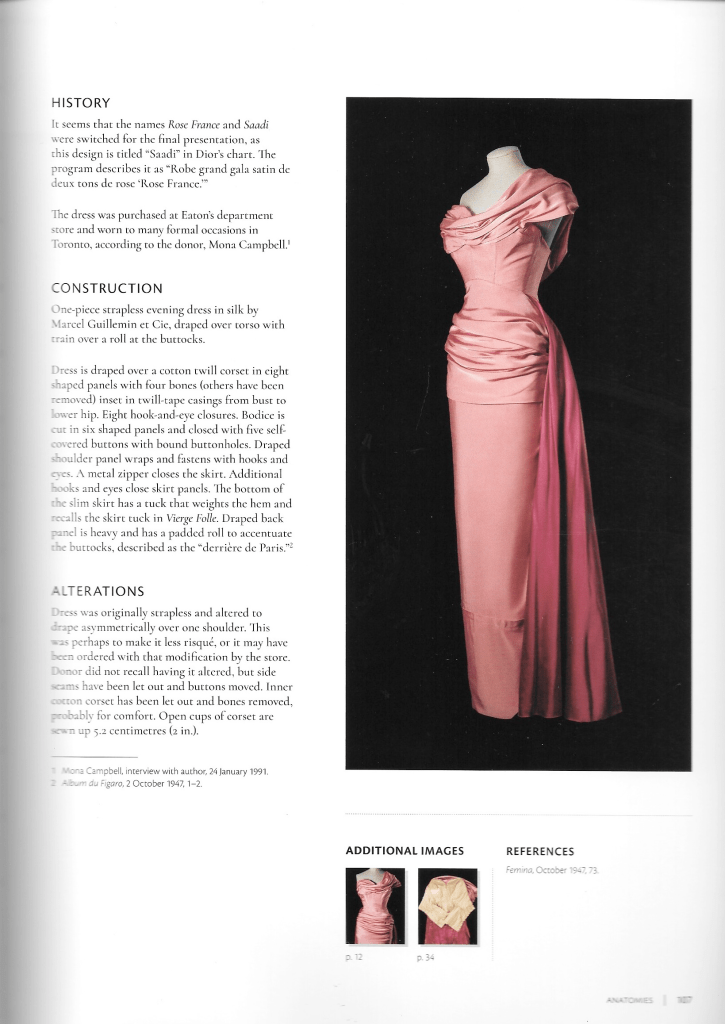
3. The company also produced silk scarves. A number of silk scarves which I have found pictured online appear to be from the early years of the company. But it also appears that Guillemin became known for its scarves at least through the 1960s.

A few vintage scarves with the Guillemin name printed on them are currently available for sale in various online shops and sites. This one appeared in an Etsy shop a few weeks ago, and I was quick to purchase it.
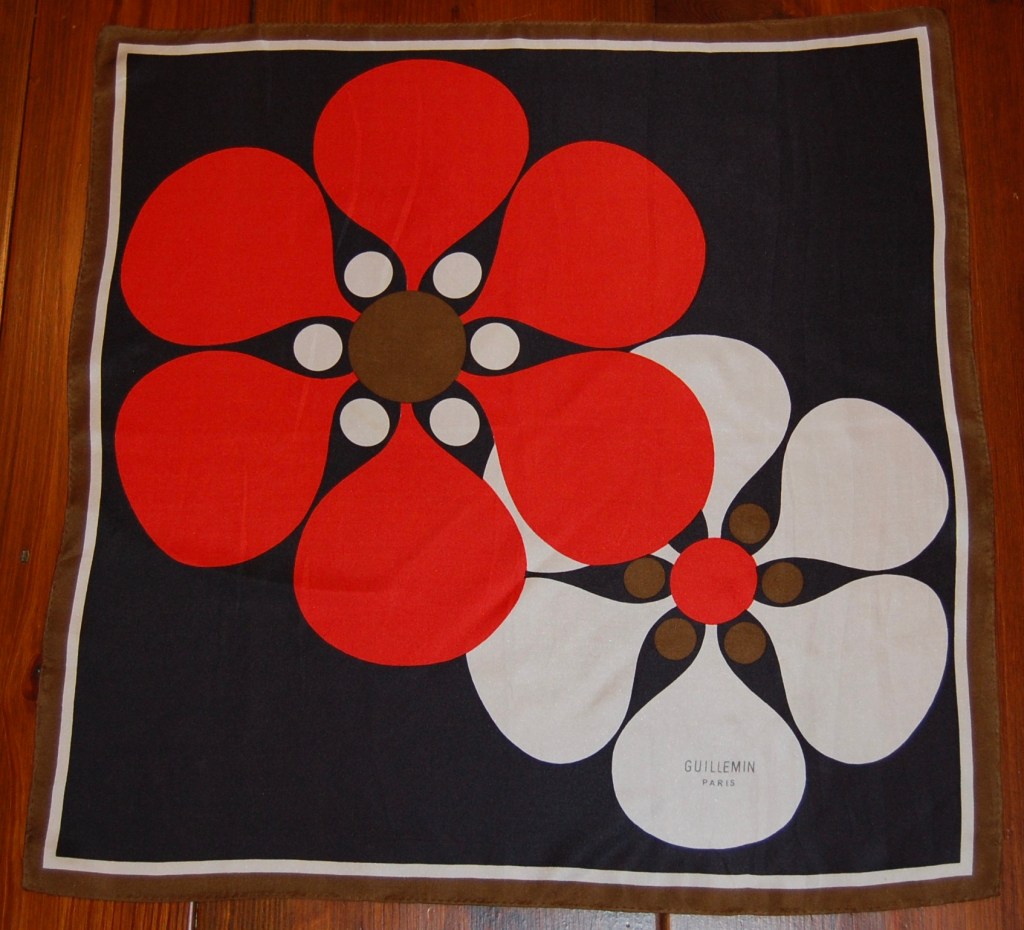
The seller listed it as “probably 1980s,” but I believe it to be from the 1960s when Marcel Guillemin et Cie produced a number of scarves in bold geometric designs. This one is quintessentially 1960s’ “flower power.” And the silk is lustrous, of the best quality.
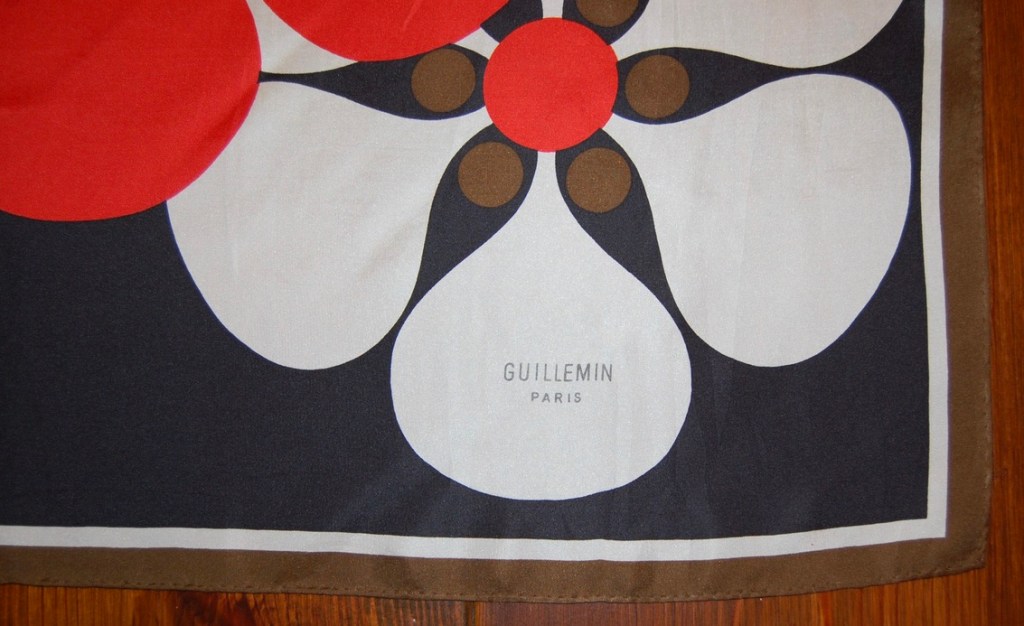
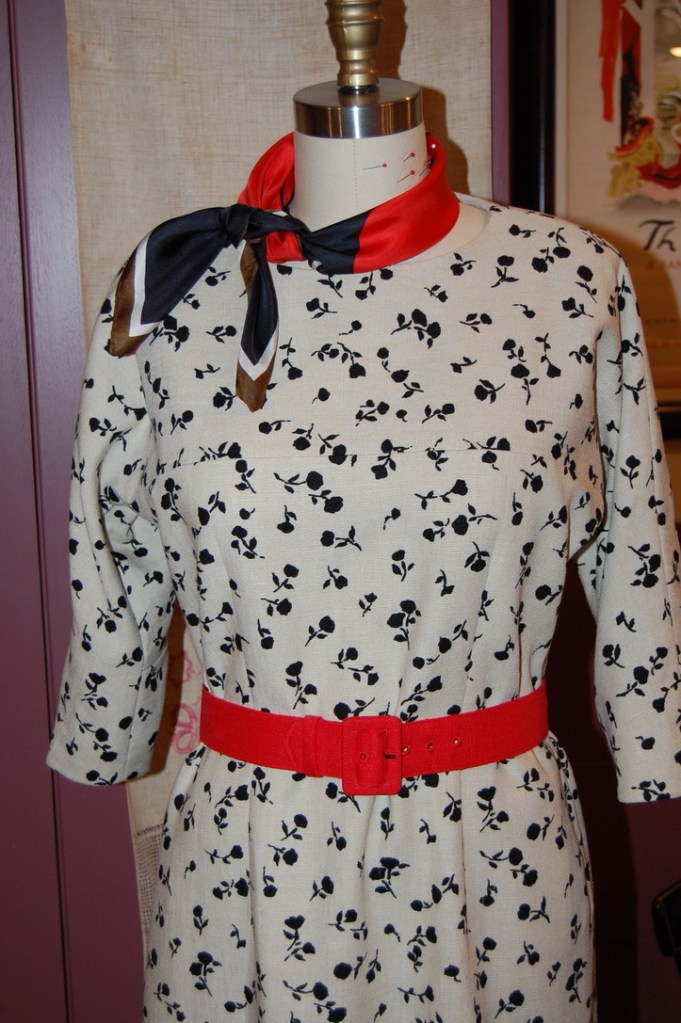

The fabrics we use in our sewing is of such importance to a successful outcome. I have treasured this opportunity to learn more about this fabric and the storied history of Marcel Guillemin et Cie.
Of course, every story benefits from a happy ending. I have still to finish writing – or should I say, sewing – the ending, but with any luck, it will be the successful completion of my red silk dress. Stay tuned for the next chapter.

Love this! Such a rich history behind one purchase. You have an eye, and the patience to wait for inspiration.
Thanks, Emmy! The history just adds one more layer of enjoyment to the process of fashion sewing.
That scarf and the red belt are perfect.. You do so inspire!
Thank you, Betty. I’ll add a red handbag, too, if we ever go out again!
Really interesting story. Thanks for all the research. I’m certain this will make an amazing dress. The scarf and belt compliment the linen print beautifully.
Thank you, Mary. There are so many layers of history to fashion sewing. all of which I find fascinating.
I loved reading this. I appreciate your research and your style. Your red letter silk dress is going to be great, as is this linen one.
Thank you, Mery! I was nervous wreck cutting out the red silk, but now I’m on my way with this dress.
You always amaze me with your inspiring research and ideas! Beautifully done💖
Thank you, Kate! I’m just glad I did not come up empty-handed in my research on this fabric – although there is still more to learn.
Every dress has an interesting story behind it. No assembly line
fashions in you closet. Cheers!
Thanks, Peggy! And I think the stories are richer when we make the dresses!
Looking forward to the dress, and loved the history lesson, Karen. That scarf was quite a find!
Thanks, Kathy. Yes, I love the scarf!
This is very interesting thank you
You are very welcome, Marie. Thank you for your comment!
thank you for the wonderful ‘armchair traveler’ moment! I feel enriched by your story… it has swept me off to a different time and a different place (or two or three)! The historical perspective adds so much depth to enjoying the silk fabric EVEN more! I can hardly wait to see your completed dress. xo
Thank you, Nancy. I certainly had my own “travel” moments as I discovered the secrets of this silk fabric. I’m so glad you enjoyed the post!
Thanks so much for the history here. This makes the experience so much richer when you know more about the background of the things we love today.
It was a fascinating search into the history of this fabric manufacturer, that is for sure! So glad you enjoyed it.